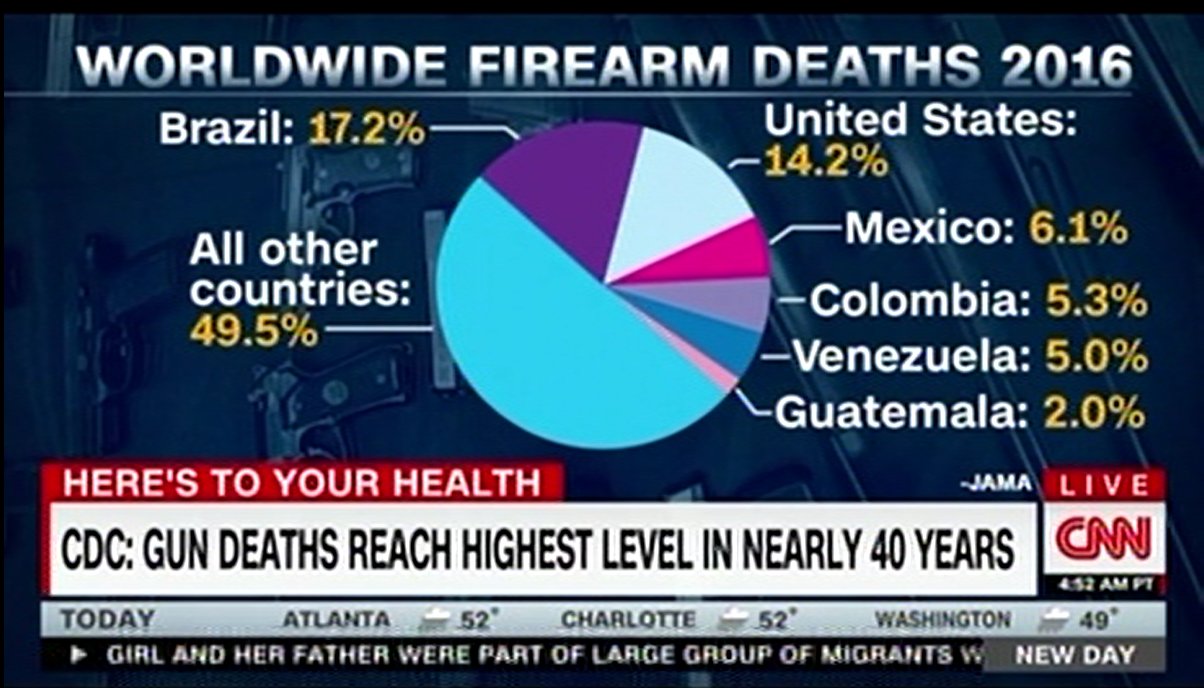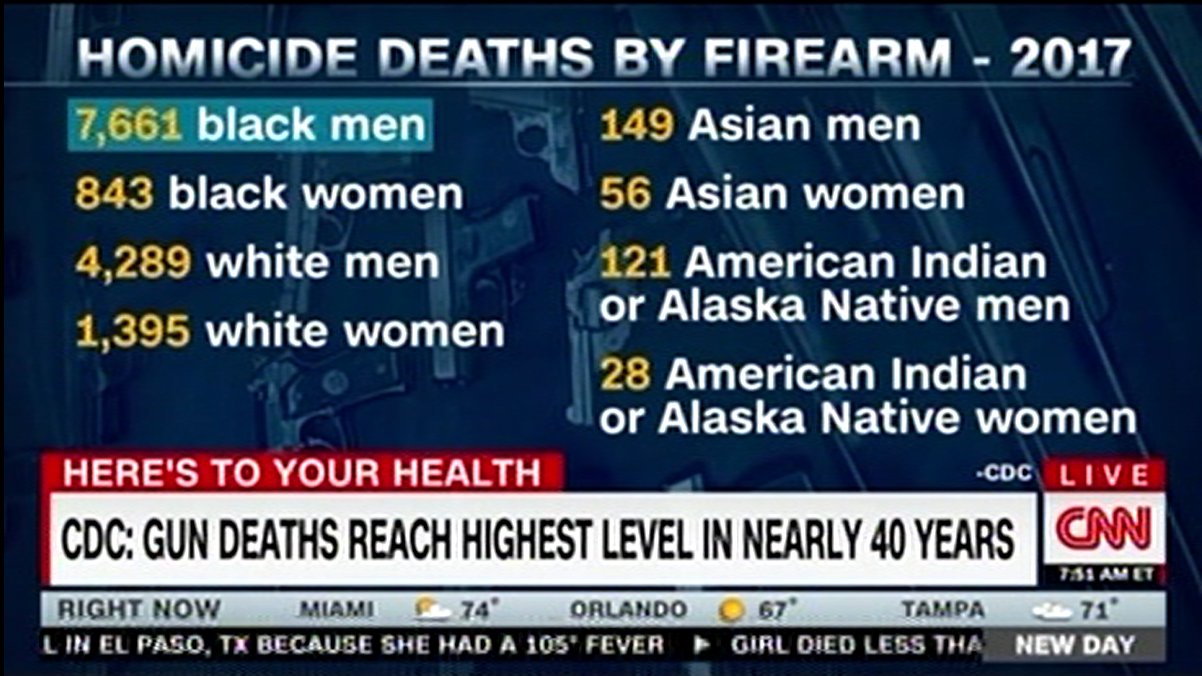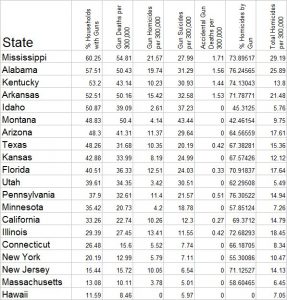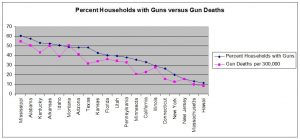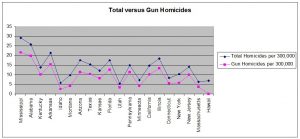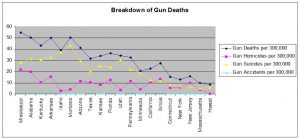Gun violence, and the use of gun control in an effort to reduce that violence, is arguably the most contentious issue plaguing the United States today. The arguments both for and against, along with their proponents have become so entrenched, and so heated that the actual facts get lost in a flood of rhetoric and vindictiveness. All too often the talking heads in the media skip over the available objective evidence in their hurry to tell you what ‘Is the only possible solution’.
Now before I begin, I’m going to try to just give the facts, no proposals about what we have to do. I only ask you to consider the evidence cited below and make up you’re own mind. I’ve always hated it when anyone told me what to think or do so I will try my best to avoid doing that.
This will be a two-part post. Today I will be comparing the situation here in the United States to that in other nations while in my next post I will examine the nature of gun violence between different states within the US.
Also, the evidence given below is statistical in nature. We are dealing with the populations of countries and states numbering in the millions. We will be considering crimes numbering in the tens of thousands. Only statistical methods can adequately describe the behavior of such large groups, which are technically know as ensembles. Anecdotal evidence of the sort ‘there was this guy in outer Slobovia who stabbed a bunch of people so see, guns don’t kill people, people kill people’ is immaterial and indeed, can be little short of a falsehood. (Obviously the example I just made up is a falsehood)
First of all let’s just consider these two questions, how many guns are there in the US and how does that number that compare with that in other nations. In table 1 below the first column gives the number of privately owned guns for every 100 persons for both the US and 19 other nations.
Table 1
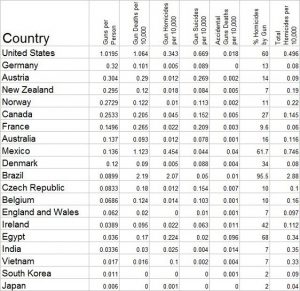
(At this point I must admit that, aside from trying to get at least two countries from every continent, I just picked the first 19 countries I thought of with 2 big exceptions. Russia and China have not been included because I was unable to obtain the information I needed about them. I suppose their governments don’t want us to make any comparisons about them. The data above is the latest I could find dating from 2014 for the US and 2011 and after for the other countries)
(Also the data which is given in the table above and used in the figures below comes from GunPolicy.org at the University of Sidney Australia which you can visit at the link below)
https://www.gunpolicy.org
In the table it is clear that the US possesses fully three times as many guns per person as any other nation. Comparing this value with the number of gun deaths per 10,000 people every year, which is listed in column two, we can see the relationship between the number of guns in a country and the rate of deaths caused by guns. This relationship can be more clearly seen if the two columns are plotting together as shown in Figure 1 below.
Figure 1
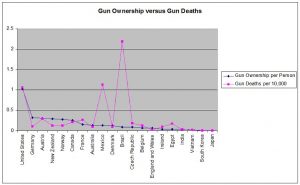
Two things are immediately clear from the figure. The first is that three nations, The US, Mexico and especially Brazil have far higher rates of gun deaths than any of the other 17 countries. The second is that, with the exception of Mexico and Brazil, gun ownership per person tracks very well with gun deaths per 10,000 each year.
Statistically Mexico and Brazil are called outliers, that is there is some factor causing a high rate of gun deaths in those nations that is not a factor in the other 18 countries. Indeed anyone who follows world events knows that Mexico and Brazil are both are fighting bloody civil conflicts against well-organized criminal gangs, a condition that is not present in our other countries.
Since we are trying to determine the effect of guns on gun deaths, not the effect of organized crime, we are justified in removing the outliers from our data set provided we make it clear that we are doing and detail our rational for doing so, as I have done above. With Mexico and Brazil removed Figure 1 now becomes Figure 2.
Figure 2
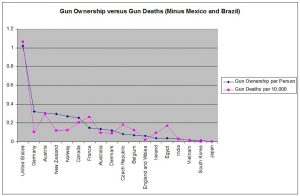
The relationship between gun ownership and gun death can now be clearly seen, you can almost write it as an equation. For every gun owned per person in a country, one person out of 10,000 will be killed by a gun every year.
At this point it can be argued that guns are not the only way to kill someone, indeed people were killing each other on a regular basis long before guns were invented. If you reduce the number of guns the argument goes, won’t people just go back to killing each other with swords or knives or even rocks if they have to?
In order evaluate this argument I will now plot the total homicides, murders by all kinds of weapons, versus gun homicides only. For the argument to be valid, nations with low gun ownership should have a large difference between the two numbers due to homicides by other means. This comparison is shown in Figure 2.
With respect to the data in Table 1 I am now comparing the third column from the left with the last column all the way on the right.
Figure 3
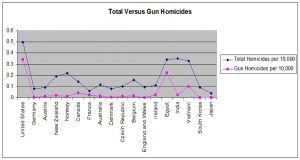
This figure does in fact appear to bare out the argument that taking away guns won’t stop violence. Consider India for example. India has the second highest total homicide rate but very, very few gun homicides. Checking table 1 for gun ownership in India we also see that the country possesses very few privately owned guns so India’s problem with violence cannot be linked to guns. To a lesser degree the same can be said for Norway and Vietnam which also have a fairly large number of homicides but few of them are gun related.
Nevertheless that is only three out of twenty nations and even India’s second highest total homicide rate is still significantly lower that that of the United States. While it is true that if people really want to kill each other they will find a way to do it, it is also clearly true that readily available guns just make it so much easier to commit murder! It is true that people kill people, but guns multiply the body count by a large factor!
As a last issue for analysis today I’d like to take a closer look inside the figures for the number of gun related deaths for each nation. You see those deaths are not all homicides, gun suicide and accidental gun deaths are also a significant factor. Very significant as you can see in Figure 4.
Figure 4
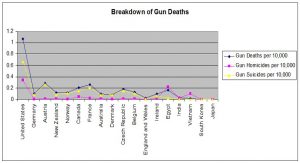
I have to admit that this result shocked me. The number of gun suicides in the United States is nearly double the number of gun homicides. In plain English we are killing ourselves twice as often with our guns as we are killing someone else. The chart shows that this ratio is approximately true in general around the world.
Surely we can all agree to do something about this aspect of gun violence. Surely we can find ways to prevent people who admit that they are suffering from depression or other mental problems from obtaining the guns with which they kill themselves. Even just allowing doctors and psychologists to try to convince those of their patients who are depressed to voluntarily give up their right to bare arms could make a significant difference.
But I guess I’m now crossing over into telling you what I think should be done and I promised not to do that. Rather than go any further I’ll stop here for today. In my next post I will look at how gun violence differs from state to state within US.
